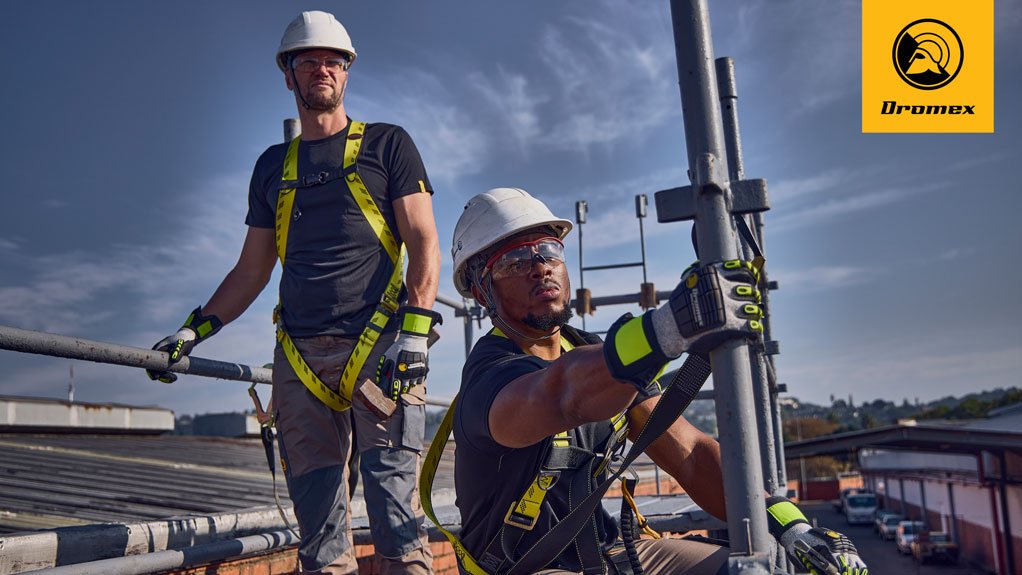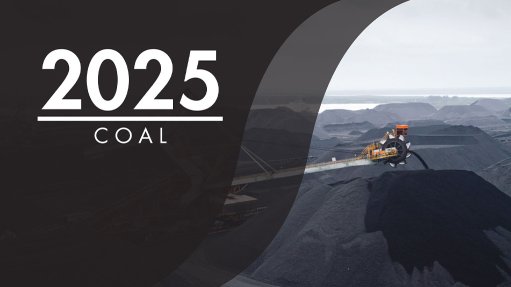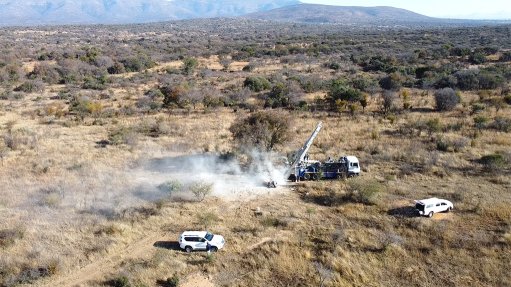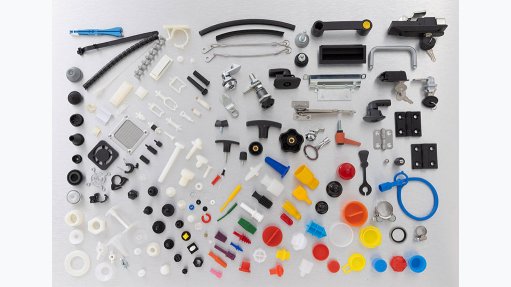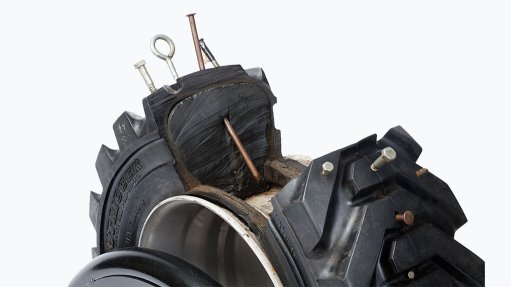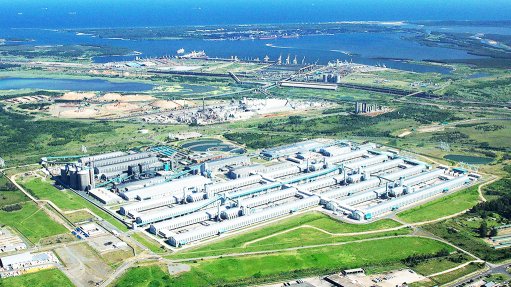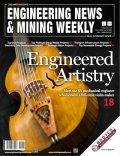How to select and implement the correct fall protection system
Falls are among the most common causes of serious work-related injuries and death. Employers have a responsibility and legal obligation to ensure that they mitigate these risks by supplying their employees with the correct safety equipment and by ensuring that the correct procedures and systems are put in place to prevent employees from falling off overhead platforms, elevated workstations or into holes in the floor and walls.
In 2024/25 the Health and Safety Executive in Great Britain recorded 124 work-related deaths with falls from height being the biggest contributor with 34 deaths - 2024/25 Reporting of Injuries, Diseases and Dangerous Occurrences Regulations (RIDDOR)1. In South Africa the Federated Employers Mutual Assurance Company (FEM) reported that falls from height accounted for 14% of all fatalities in the construction industry between 2015 and 20242.
How to Avoid Becoming a Statistic
Fall Protection is the use of controls (which is a combination of equipment, procedures and practices) that are designed to protect the worker from falling when working at height or in the event they do fall, to stop them without causing severe injury.
It encompasses various methods, including:
- Fall prevention, which involves putting in place measures to prevent falls from happening, with systems such as guard rails to prevent workers reaching and falling from dangerous edges, and
- Fall arrest, which is equipment used to limit the distance and impact of a fall, with the use of lanyards, harnesses and anchorage points.
Major risks from falling after a fall is arrested include:
Suspension trauma
- Forces on a body - the longer a fall, the more force on a body is experienced
- Incorrectly fitted harnesses hazards
- Objects in clothes pocket penetrating and piercing the body when under tension
The ABC’s of Fall Protection
To use a fall arrest system the following components are vital:
A is Anchorage – This is a secure point of attachment for connector and body harness that is capable of withstanding significant force and be unquestionably sound. Examples are roofs, scaffolds, steel beam, railing etc.
B is Body Harness – A safety harness wraps around a worker’s body and connects to the rest of the fall protection system so that if the worker were to fall, the harness would hold the worker up while the rest of the system stops the fall.
C is Connections – A connecting device creates a steadfast connection between a worker’s body harness and an anchoring point. Self-retracting lifelines and fall protection lanyards are the two most common connecting devices yet are distinctly different.
Importance of Training and Maintenance
Training and maintenance can be the difference between life and death in any fall protection systems.
- Employers are legally required to provide their employees with comprehensive training on the proper use, maintenance, and limitations of the chosen fall arrest system.
- Employers must also establish a system for regular inspection and maintenance of the fall protection equipment to ensure that it is in good working condition.
please always refer to the recommended inspection guidelines on each item of the Dromex fall arrest system equipment.
Risk Assessment must be done before any work starts
Before any work from heights can begin, a comprehensive risk assessment must be completed to identify all the risks and ensure that the correct fall protection system has been put in place. This involves identifying fall hazards, evaluating risks, and choosing control measures, often following a hierarchy of controls. This process will assist in selecting the correct system to effectively minimise fall related injuries and fatalities.
Important considerations when conducting a risk assessment
Hierarchy of controls - Fall protection should prioritise the elimination of fall hazards or the use of fall restraint whenever possible before relying on fall arrest systems. Image referenced https://safesitehq.com/fall-protection-equipment/
Employer and Employee Responsibilities
Employers are responsible for providing a safe working environment, including fall protection equipment, training and rescue plans.
Employers are responsible for training their employees and ensuring that all the fall arrest equipment is correctly maintained.
Employees are responsible for following safety procedures, using the fall protection equipment correctly, and reporting any hazards or concerns that they identify.
Servicing
Pre-use inspections - Workers must inspect hardware of equipment before use to ensure there is no damage, and the system is in good working order.
Competent person inspection - Competent persons conduct detailed, thorough inspections regularly such as every three to six months or yearly, depending on use of equipment, to identify potential issues that may not be visible during a pre-use check. A competent person is trained by the original equipment manufacturer.
Cleaning and proper storage are vital. Dirty equipment can be cleaned with appropriate solutions and procedures. Wet equipment should be air-dried, away from heat sources.
Equipment that has been used to arrest a fall, or is damaged, should be withdrawn from service immediately and properly disposed of to prevent accidental reuse.
Detailed records of product certificates, inspections, maintenance and repairs must be kept on file for the life of the equipment, including the date, findings and actions taken.
Fall protection systems help employers to proactively develop a strategy that helps to eliminate or manage a fall or hazard by creating a safe work environment for everyone.
- Worker Safety: The primary goal is to prevent falls and minimise the risk of injury or death to workers. Employees must prioritise worker safety first.
- Legal Compliance: Fall protection plans are often mandated by regulations like OSHA standards in the US or construction regulations in South Africa.
- Reduced Liability: Having a comprehensive plan can help reduce employer liability in the event of an incident.
- Increased Productivity: A safe work environment can lead to increased productivity and morale among workers.
References:
1 Source: Work-related fatal injuries in Great Britain – HSE
2 Source: Falls from Different Levels in the South African Construction Industry - Master Builders KwaZulu-Natal
Article Enquiry
Email Article
Save Article
Feedback
To advertise email advertising@creamermedia.co.za or click here
Press Office
Announcements
What's On
Subscribe to improve your user experience...
Option 1 (equivalent of R125 a month):
Receive a weekly copy of Creamer Media's Engineering News & Mining Weekly magazine
(print copy for those in South Africa and e-magazine for those outside of South Africa)
Receive daily email newsletters
Access to full search results
Access archive of magazine back copies
Access to Projects in Progress
Access to ONE Research Report of your choice in PDF format
Option 2 (equivalent of R375 a month):
All benefits from Option 1
PLUS
Access to Creamer Media's Research Channel Africa for ALL Research Reports, in PDF format, on various industrial and mining sectors
including Electricity; Water; Energy Transition; Hydrogen; Roads, Rail and Ports; Coal; Gold; Platinum; Battery Metals; etc.
Already a subscriber?
Forgotten your password?
Receive weekly copy of Creamer Media's Engineering News & Mining Weekly magazine (print copy for those in South Africa and e-magazine for those outside of South Africa)
➕
Recieve daily email newsletters
➕
Access to full search results
➕
Access archive of magazine back copies
➕
Access to Projects in Progress
➕
Access to ONE Research Report of your choice in PDF format
RESEARCH CHANNEL AFRICA
R4500 (equivalent of R375 a month)
SUBSCRIBEAll benefits from Option 1
➕
Access to Creamer Media's Research Channel Africa for ALL Research Reports on various industrial and mining sectors, in PDF format, including on:
Electricity
➕
Water
➕
Energy Transition
➕
Hydrogen
➕
Roads, Rail and Ports
➕
Coal
➕
Gold
➕
Platinum
➕
Battery Metals
➕
etc.
Receive all benefits from Option 1 or Option 2 delivered to numerous people at your company
➕
Multiple User names and Passwords for simultaneous log-ins
➕
Intranet integration access to all in your organisation



